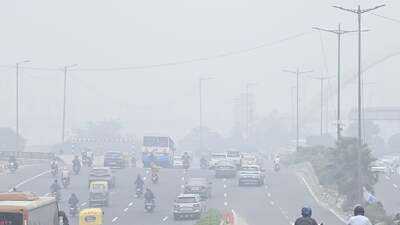Over Delhi’s thick, amber-grey horizon, a small Cessna aircraft traced delicate arcs in the sky on Tuesday, carrying the city’s newest promise — to wash away its smog with man-made rain. Below, millions of residents looked up with cautious hope as the aircraft released silver iodide and sodium chloride into the clouds, shimmering in the pale sun like dusts of optimism.
It was Delhi’s first cloud-seeding attempt in more than half a century — and a desperate one. For weeks, the capital has been trapped beneath a toxic haze, its Air Quality Index (AQI) hovering between 300 and 400, nearly 20 times higher than what the human lungs can safely bear.
But as the hours passed, the clouds refused to yield. The rain never came. And by dusk, officials quietly confirmed what many feared — the attempt had been “not completely successful.”
This was not Delhi’s first flirtation with the skies. Its last cloud-seeding effort dates back to 1972, preceded by one in 1957, both aimed at fighting drought. This, however, was the first indigenous effort to summon rain to cleanse the air — a collaboration between the Indian Institute of Technology (IIT) Kanpur and the Delhi government, born of urgency rather than experiment.
In 2023, air pollution claimed 2 million lives in IndiaTrust of Delhiites in Government’s #pollution or #AQI data seems to have taken a hit with 87% having no or low trust in it. @gupta_rekha @mssirsa @CPCB_OFFICIAL @CAQM_Official @moefcc please fix this. @Sonal_MK @GargiRawat @vimlendu @Suhelseth @sanjayuvacha @RockyEatsX… pic.twitter.com/pwkbWoagMn
— Sachin Taparia (@sachintaparia) October 30, 2025
“The moisture content in the clouds was very low,” explained IIT Kanpur director Manindra Agarwal, who led the trial. “One measure of success is if it rains — which certainly did not happen. But even without rain, we recorded a small reduction in particulate matter.”
The results, though faint, offered a glimmer of scientific intrigue. The institute noted that fine particulate matter (PM 2.5) — the microscopic pollutant that chokes lungs — had shown measurable decline after the seeding, suggesting that even limited atmospheric manipulation could nudge Delhi’s air in the right direction.
Cloud seeding is part science, part faith. The process involves dispersing tiny particles like silver iodide into moisture-laden clouds, encouraging the formation of ice crystals that can eventually grow heavy enough to fall as rain. The method has seen success — and controversy — around the world, from China’s pre-Olympic weather control experiments to Dubai’s flood-inducing storms last year.
But it remains an uncertain art, dependent on conditions too delicate to command. “We’re trying to alter natural processes, and that’s bound to have limitations,” climate and sustainability expert Abinash Mohanty told the BBC. “There isn’t enough empirical evidence to say how much cloud seeding can actually lower pollution levels.”
Indeed, even as Delhi’s environment minister Manjinder Sirsa vowed to repeat the experiment once moisture levels rise, many scientists warned against placing too much faith in the skies.
In the capital’s crowded neighborhoods, the smog has become both backdrop and burden. Schools have shut, masks have returned, and the morning sun glows dim behind a veil of dust. Amid this despair, the idea of artificial rain captured public imagination — a poetic solution to a man-made crisis.
Yet Tuesday’s failure was a reminder that Delhi’s pollution problem, rooted in industry, transport, and crop fires, cannot be washed away so easily.
As the plane’s silver trails faded and the clouds drifted silently westward, the city remained dry — and breathless.
The hope, however, endures. For every failed experiment, Delhi dreams anew of rain — real or made — that might someday cleanse its weary skies.
You may also like

Punjab BJP seeks explanation from CM Mann over 'Sheesh Mahal 2.0' row

Super Cup: Goalkeeper Samik Mitra scores as Chennaiyin FC draw Dempo

No respite from pollution? IIT study finds cloud-seeding unviable for Delhi winter; cites low moisture, weak impact

Lamine Yamal diagnosed with 'incurable' condition in major blow for Barcelona

Maha Cong chief Sapkal alleges police surveillance, blames CM Fadnavis







